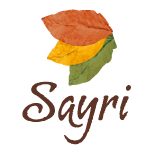Aromas are part of the group of additives used frequently in the production of tobacco, among other products. For example, the aromas are used to create flavors foreign to tobacco (as menthol or vanilla), and to “finish up” the flavor of tobacco or to “improve” the taste of less intense tobaccos (as cocoa and licorice).
Additives are substances added to products during the manufacturing process in order to provide them certain properties which they do not have naturally. Common tobacco additives are, for example, aromas, preservers and humectants.
Preservers are among the most common tobacco additives, and they are also used in other stimulating and food products. Their purpose is to prevent the attack of microorganisms such as mold, which would cause a premature deterioration of the products.
Humectants are additives used to prevent tobacco excessive drying, as tobacco dryness causes undesirable flavor changes. Especially in the case of the fine cut, an excessive dryness of tobacco impairs its properties when rolling a cigarette.
Puffed tobaccos are also known as expanded tobaccos. In the production of puffed tobacco, complex processes are used to increase, or inflate, the cut tobacco volume up to 70%. The adding of puffed tobacco in tobacco mixes allows, for example, reducing nicotine and condensate values. However, it is often used solely for cost savings, as the use of puffed tobacco reduces the amount of tobacco in each cigarette.
When removing the nervations of the leaves, very small leave fragments fall (trimmings), which are called tobacco residues. During the subsequent tobacco treatment for the production of cigarettes or rolling tobacco, residues are also generated, predominantly in powder form. Often, tobacco residues are reused in the subsequent production of reconstituted tobacco.
The tobacco from the region of the US state of Virginia is called Virginia tobacco, and today is considered the generic concept of light large leaf tobaccos. At present, Virginia tobacco is grown throughout the world. These plants contain, compared to other varieties, a high percentage of natural sugar that results in the taste of tobacco. Thus, Virginia tobacco is especially notable for its light golden brown color and soft pleasant aroma, and is the base for many tobacco mixes, called blends. Large tobacco leaves are harvested from bottom to top of the plant, at intervals that depend on the plant maturity, often with the manual collection of the higher, more delicate leaves. Tobacco leaves drying is carried out according to the intended use. However, Virginia tobacco is heat dried for the production of raw tobacco. In this maturing process, hot air is sent through the drying chambers, thus providing tobacco with its typical soft aroma.

